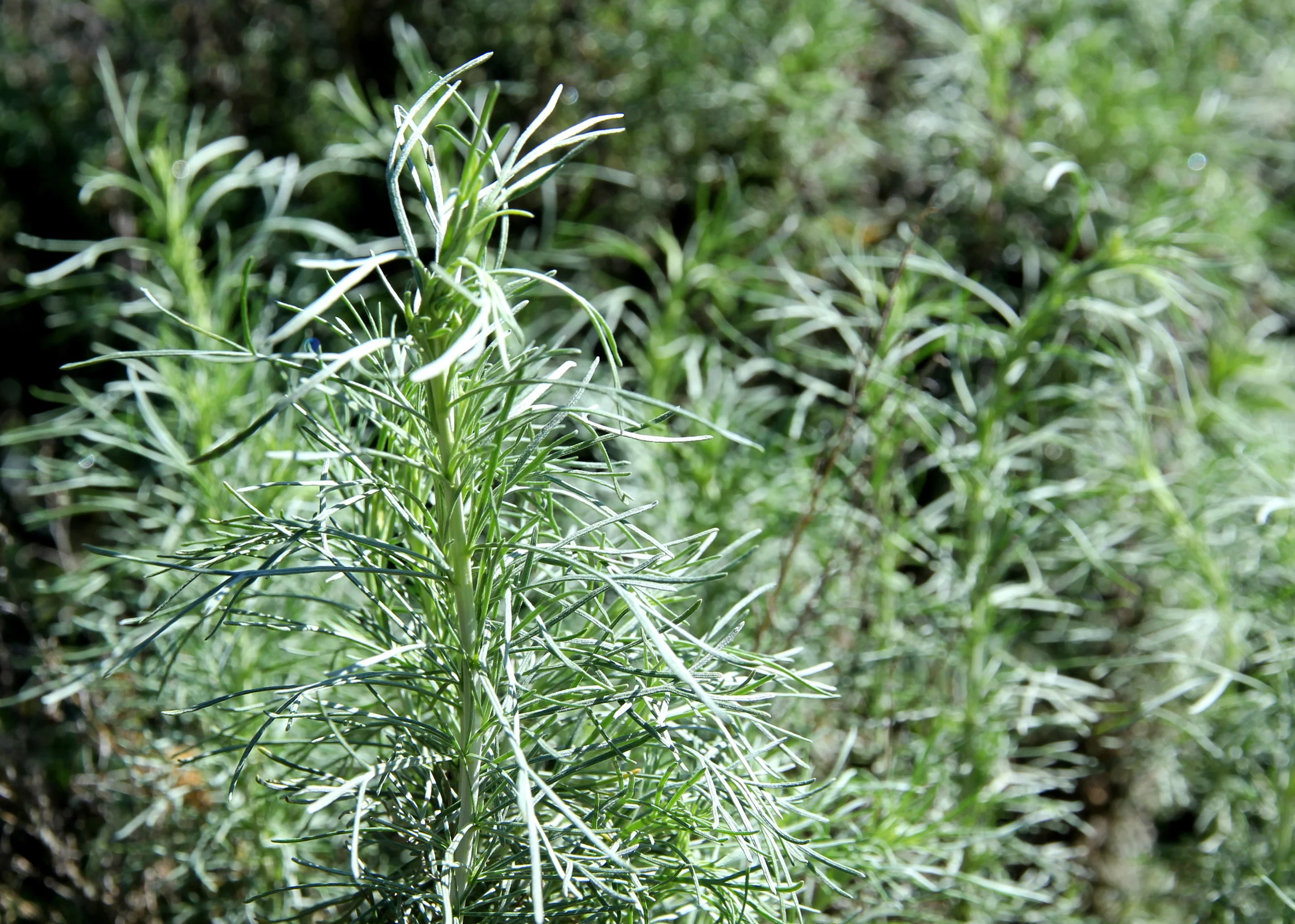Artemisia californica
California Sagebrush
These fragrant gray-green shrubs are the dominant vegetation in many parts of the western range and desert regions. They are commonly found throughout the coastal sage scrub plant community. They grow 3 to 5 feet tall and wide and will stay fairly tidy year-round with pruning once or twice a year. The gray foliage is a nice complement to perennial color. The main attraction is the aromatic foliage. A Sagebrush meadow on a hot afternoon or after a hard rain smells wonderful. Plant it is full sun; it is drought-tolerant.
Wildlife value: Sagebrush furnishes essential cover for many small animals. Its foliage and flower clusters are eaten by a variety of small mammals and hoofed browsers. Wild sheep and goats on the Channel Islands browse this plant heavily. California Sagebrush provides thermal and escape cover for small birds and mammals. Many species of birds utilize it for roosting and nesting cover, including the endangered California Gnatcatcher. The Orange-throated Whiptail Lizard, another threatened species, lives in openings between California Sagebrush and other coastal sage scrub shrubs.
Uses: Chumash Indians used California Sagebrush for windbreaks, fire sticks, and arrow shafts. Poultices or hairwashes were applied to relieve headaches. The shrubs were also used for ritual purification, especially in ceremonies relating to death. Bundles of California Sagebrush were erected along paths to shrines. Spanish settlers used the plant to treat many ailments. A tea made from the shrub was used to treat bronchial problems, and a wash made from soaked leaves was applied to wounds and swellings. Early miners put sprays of the branches in their beds to repel fleas. Where wood is scarce, the trunks of big Sagebrush can be used for fuel.

